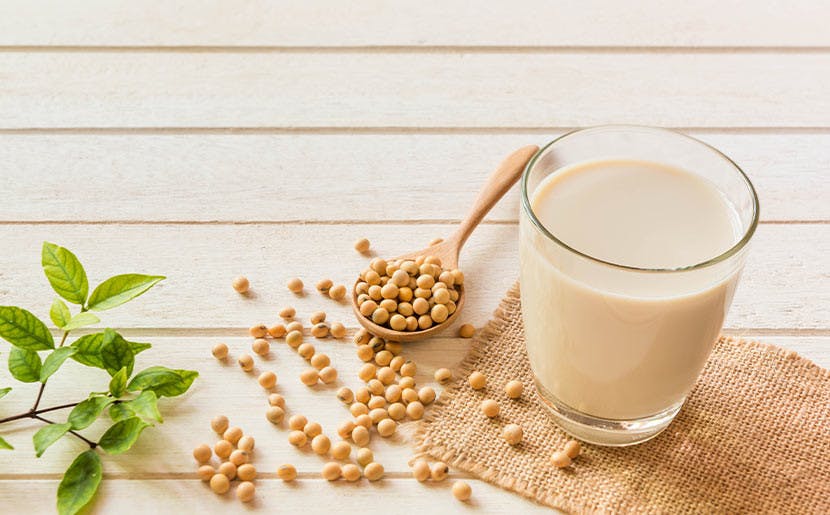The Truth About Soy
Article by:
Amazing Discoveries™ |
19 min read
So much negative press is circulating around the humble soybean, it makes you wonder. Is soy bad for you? Does it cause cancer or increase the risk of Alzheimer’s disease? Does soy estrogen trigger the early onset of puberty or increase estrogen in males? Can eating soy lead to thyroid problems?
Many stores limit the amount of soy milk they carry, opting for alternatives such as almond milk, oat milk or other varieties simply because the average shopper believes we must limit soy consumption because it’s bad for you. Are these fears justified?
Soy’s Bad Press
Let’s look at some of the negative press soy has received.
Nutrition expert David Dahlman identifies a number of flawed studies that have misled consumers on soy. One such study resulted in warnings that athletes on soy protein powder would lose muscle mass. The study compared pigs fed protein from either soy or casein and study authors stated that “casein or soyabean-protein isolate (was) the only independent variable.”1 But as Dahlman points out, the casein-fed group was supplemented with additional amino acids, while the soy-fed group was not.
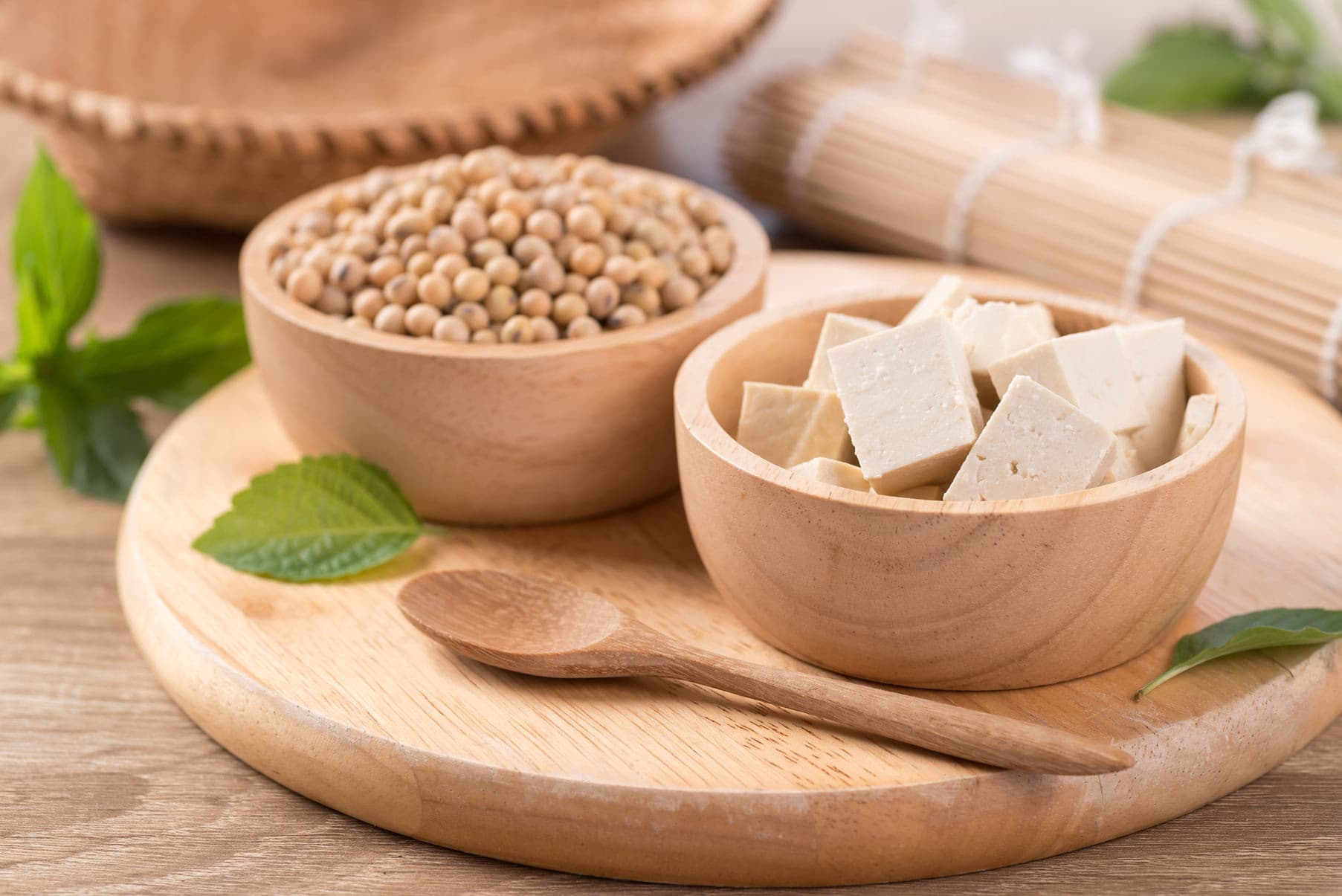
Another study, through faulty assumptions, connected soy to the development of rickets. Edward Mellanby conducted a study in 1919 to show a correlation between diet and rickets, which was especially prevalent in Scotland. A group of dogs, fed only oats, developed rickets which confirmed Mellanby’s hypothesis that Scotland’s staple food, oats, was deficient in some bone-building nutrient.
Critics of soy have referred to the Mellanby study and postulated that since both oats and soy contain phytic acid, which blocks absorption of minerals, soy can, therefore, lead to rickets. This conclusion is a stretch. How can conclusions made on a study that involved no soy be applied to soy? Assumptions made about soy based on this study on oats are complete conjecture.
First of all, all seeds, grains, legumes, and nuts contain phytic acid. Soaking and cooking can reduce the amount of phytic acid. However, in a varied diet, phytic acid shouldn’t concern us as its overall negative effects are negligible and it has significant health benefits too.
Secondly, soy did not cause rickets in the Mellanby study, as the dogs were not even given soy. As Dahlman points out, Mellanby’s dogs were kept indoors and had no exposure to sunlight, and hence were vitamin D deficient. It is partly due to Mellanby’s work that researchers have since discovered the real cause of rickets—not soy or any other plant food—but vitamin D deficiency.
Sexuality
Because of estrogen-like compounds in soy, some have questioned what effects soy might have on human sexuality and sexual development. But soy suspicion on this front seems to be rooted in cultural prejudices more than in real-life evidence. James Hamblin, in The Atlantic,2 identified a cultural bias in North America that views beef burgers as being more masculine than soy burgers. And many North American men seem to believe that eating soy burgers will make them sprout “man boobs.” Could this be true? Does soy increase estrogen in males?
In one study, men were given a supplement of 40 mg of isoflavones, phytoestrogen, (equivalent to ¾ cup of tofu or 1.5 cups of soy milk) every day for two months. The men showed no change in measured sexual parameters. Researchers concluded, “The phytoestrogen dose consumed had no effect on semen quality.”3 This finding is consistent with a review of over 41 studies involving more than 1700 men which found no link between soy consumption and testosterone levels.4
What about soy and early onset puberty in girls? Is there a connection? An analysis of studies involving a total of 598 children who consumed soy and 2957 who did not found no “association between a soy-based infant diet and the onset of puberty in boys or girls.“5
Thyroid Function
Have you heard that soy can interfere with thyroid function? Some studies found that iodine-deficient soy-fed animals developed goiter. But before getting to the research, let’s consider the work of the thyroid and how iodine affects its function.
The thyroid gland produces hormones that regulate metabolism, growth, and development and needs an adequate supply of iodine to function properly. When there’s not enough iodine in the diet, the thyroid gland becomes enlarged in an attempt to capture all the iodine that is available. An enlarged thyroid gland is referred to as goiter.
In a study published in 1961, rats were fed an iodine-deficient diet. Note that the starting point of this experiment was to make rats iodine deficient, a condition that naturally leads to goiter. Then the rats were fed soy in various forms. Soybeans are not a source of iodine. Not surprisingly, as the rats continued on this iodine deficient diet, they developed enlarged thyroid glands (goiter), but thyroid enlargement was greatest in rats fed raw soybeans. The lesson to take from this is that if you have a thyroid problem, you should cook your soybeans. However, what was emphasized instead was a connection between soy and thyroid enlargement. The researchers concluded that “Although the lack of iodine is the principal cause of soybean goiter, raw soybeans . . . have a goitrogenic (goitrogen?) activity which is removed or destroyed during processing”6 (parentheses in the original). Remember that the diet was intentionally deficient in iodine, a condition that causes goiter and that iodine supplementation eliminated the problem. And although soy did not cause thyroid enlargement in the rats, North American researchers continued to look at soy as the enemy.
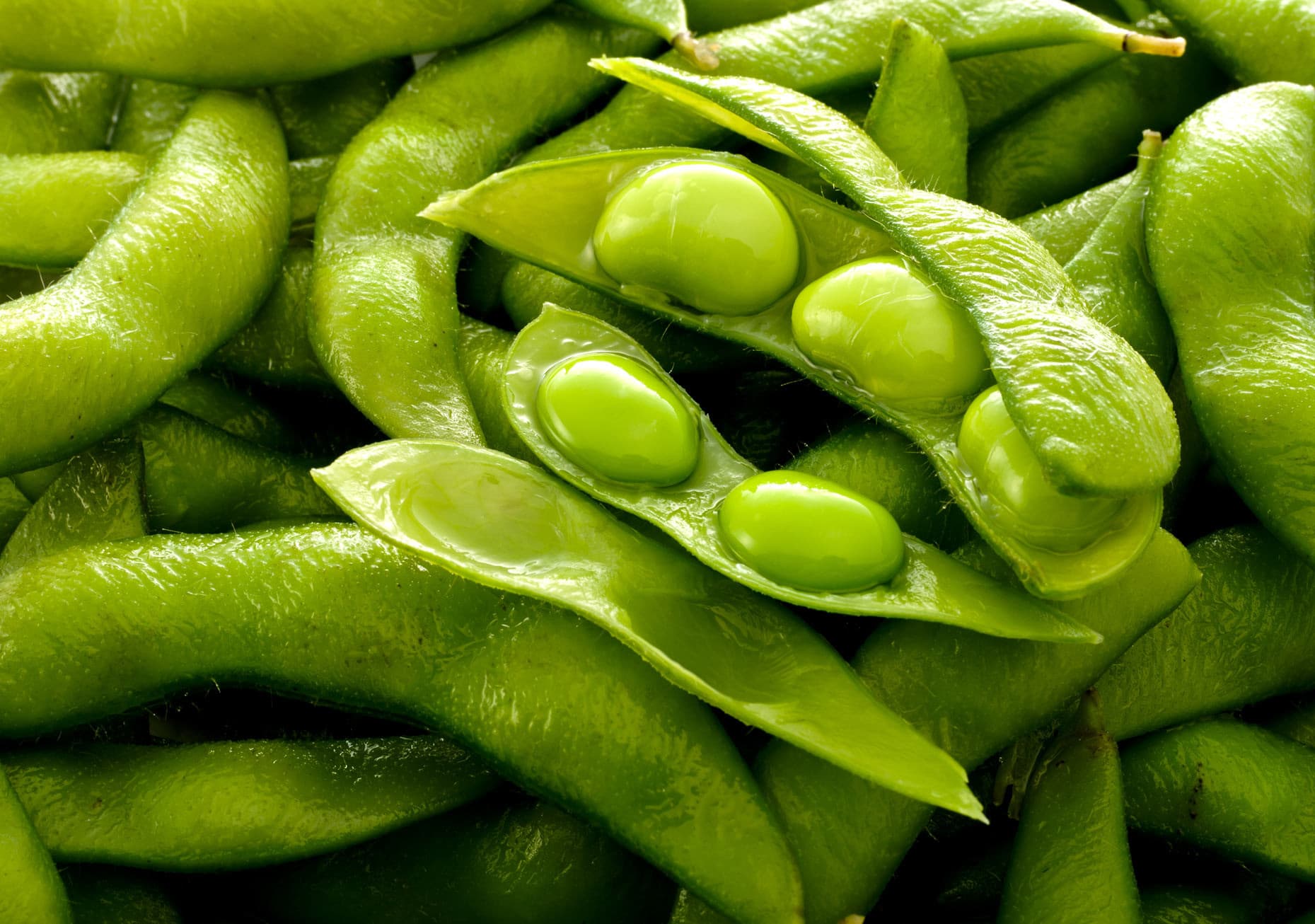
A more recent review of the research led researchers to finally conclude, “Soy supplementation has no effect on the thyroid hormones and only very modestly raises TSH levels.”7 They noted, “The clinical significance, if any, of the rise in TSH is unclear.” So while soy foods may increase risk of goiter for those with hypothyroidism, iodine fortification “largely overcomes soy-related goitrogenicity (tendency to produce goiter, a swelling of the thyroid).”8 It’s important to keep in mind that iodine deficiency causes goiter, not soy. For those concerned about iodine deficiency, the use of iodized salt or including kelp in the diet can protect against iodine deficiency.
Breast Cancer
Since some forms of breast cancer are estrogen-related, should we be concerned about soy causing breast cancer? On the contrary, researcher Mark Messina states, “It is widely recognized that breast cancer incidence rates in soyfood-consuming countries are much lower than in Western countries.”9 The average daily intake of phytoestrogens in East and Southeast Asia is between 20-50 mg per day compared with Americans who consume only 0.15-3 mg per day.10
Epidemiologic studies, which look at the rates of diseases in different groups of people to determine causes, “show that higher soy consumption is associated with an approximate one-third reduction in breast cancer risk.”11 This is great news! Wouldn’t women want to know about a food that confers a 30% reduction in breast cancer risk? But how does soy protect against breast cancer?
In her video, Women’s Health, naturopath Barbara O’Neill explains the difference between human, plant, and synthetic estrogens. Each of these estrogens is capable of binding to cells at estrogen-receptor sites. If it’s not needed, phytoestrogen will not enter a cell but will sit in the receptor site, blocking other estrogens from entering. This is the protective effect soy has against estrogen-related cancers. Instead of fearing soy, we should be proclaiming its health benefits and making it a regular part of our diet.
Kidney Stones
Soy foods contain oxalate, a component of calcium oxalate kidney stones. Should this concern us? No, because soy foods also contain phytate which inhibits the formation of calcium kidney stones. A study analyzed soy foods and found that 18 of the 19 tofu brands and two soymilk brands were low oxalate foods, containing less than 10 mg of oxalate per serving.
Researchers also found that soy foods high in oxalates were correspondingly high in phytates, the protective factor. Researchers concluded, “Soy foods containing small concentrations of oxalate and moderate concentrations of phytate may be advantageous for kidney stone patients or persons with a high risk of kidney stones.”12 Once again, it appears that the truth about soy is the exact opposite of what many believe about it.
Dementia
Long-time soy researcher Mark Messina has also identified flaws in research13 that raised concerns about soy on cognitive function. For instance, an Indonesian study14 titled their report, “Soy products may raise dementia risk” but acknowledged that formaldehyde, a known neurotoxin, was used as a preservative in the production of tofu in Indonesia. The study’s title mistakenly attributes negative effects with soy instead of the formaldehyde.
On the contrary, soy appears to be good for the brain. A study15 of elderly Japanese found that those with higher amounts of equol, a soy metabolite, had less than half as many white matter lesions (brain abnormalities associated with Alzheimer’s). In other words, the presence of equol appears to protect against Alzheimer’s disease. Equol is produced in the gut from soy foods and is associated with improved cognition.

Why has soy faced so much unjustified, negative press in recent years? Perhaps what we hear about soy in the media is biased by pressure from industry and popular culture. Nutrition researcher Walter Veith says the hype over phytoestrogens in soy is “typical of the ignorance exploited by media and invested parties to give soy a bad press.” He argues that what the media reports too often is financially motivated and amounts to “what the dairy industry thinks of the soy industry or what the soy industry thinks of the dairy industry” and the science is lost in the fray.
And because of the competition to get more viewers, readers, and subscribers, media pander to consumers and tell them what they want to hear. For example, in countries where dairy consumption is especially high, Professor Veith has been told not to speak about the science that links dairy to disease. He says, “People don’t change diets easily. It takes work.”
The bottom line is: simply prepared soy foods are safe and come with numerous health benefits. Tofu and other soy products have been a staple in Asian cultures for thousands of years and mounting scientific evidence confirms the health benefits of soy. Let’s now consider the benefits confirmed by research.
Soy is an ideal protein source, as it is a complete protein, providing all essential amino acids. And, unlike meat, soy protein contains no cholesterol.16 Instead, soy has been shown to lower cholesterol. Also, because it’s a plant protein, it doesn’t raise acidity or require the release of calcium from the bones to normalize blood pH the way meat protein does. This is good news for your bones!
Health Benefits of Soy: Phytoestrogens
Soybeans contain phytoestrogens, which are estrogen-like compounds that adapt to the needs of the body. In his video To Soy or Not to Soy: What’s the Truth about Soy?, Walter Veith explains that many have misconceived ideas about phytoestrogens. But unlike human or synthetic forms of estrogen, phytoestrogens have numerous health benefits.
For instance, genistein, a phytoestrogen found in soy and other plant foods, is important for bone health. It makes bone-dissolving osteoclasts less active while stimulating bone-building osteoblasts.17 Genistein has also been shown to improve bone healing and to increase bone thickness and volume.18 In addition, studies19 have shown that genistein exhibits anti-tumor activity, improves glucose metabolism, and reduces hot flashes. Other health benefits include improvements in cardiovascular disease, diabetes, and osteoporosis.
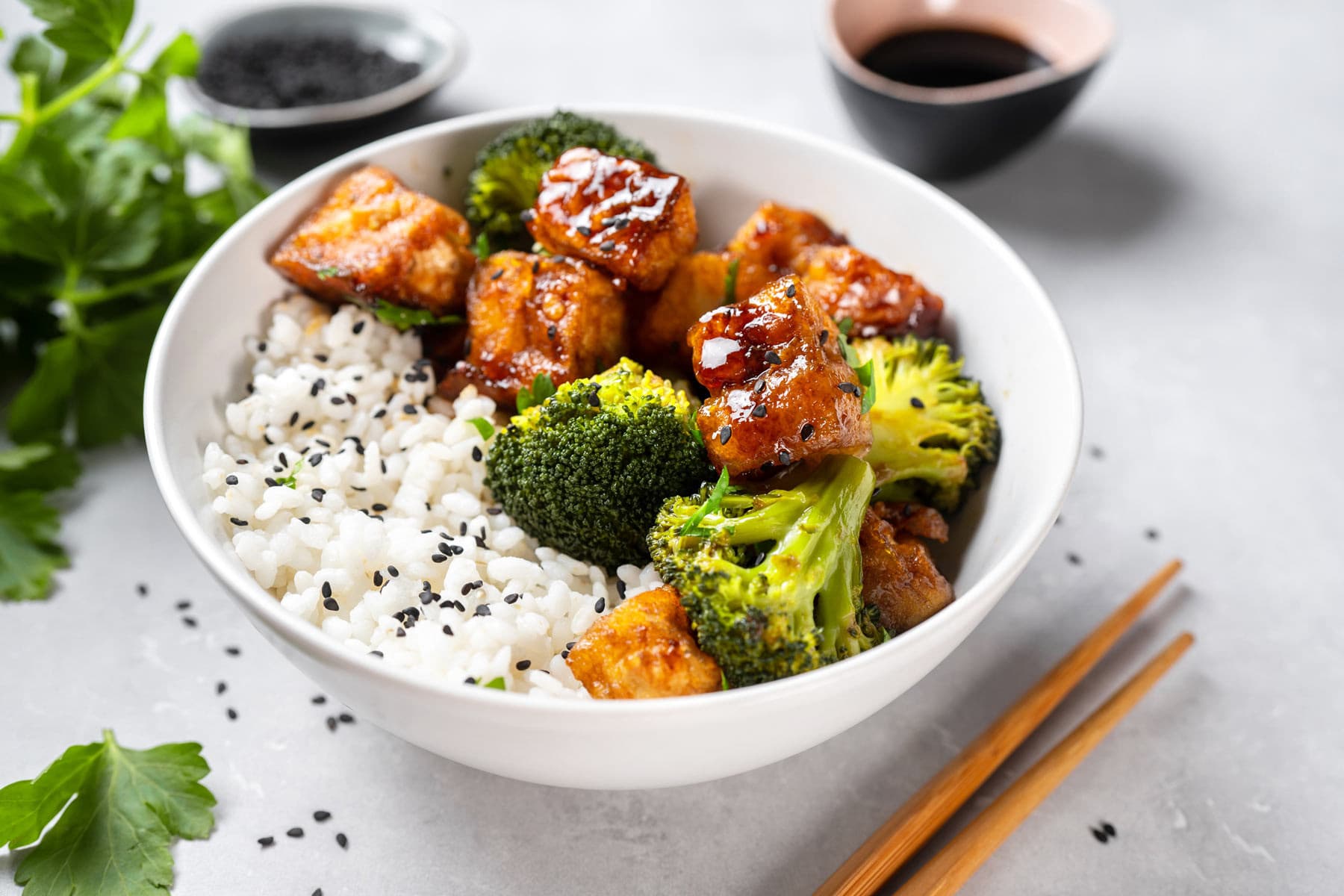
Genistein is a potent inhibitor of enzymes involved in inflammation. In his presentation, Professor Walter Veith says, “Inflammation is probably the root cause of all chronic diseases.” And inflammation is an enormous problem in developed countries. “Most people in Western societies suffer from chronic inflammation,” says Veith, “which can lead to cancer and other debilitating diseases.” In fact, inflammation plays a leading role in many conditions, including heart disease, rheumatoid arthritis, psoriasis, and inflammatory bowel disease. Phytoestrogens are anti-inflammatory and can alleviate inflammatory conditions.
Soy’s benefits to cancer, menopause problems, and bone health
Nutrition expert David Dahlman lays the question of phytoestrogens to rest, saying, “There is no estrogen in soy!” Instead of “phytoestrogen,” which can be misleading, he prefers the term “estrogen-like phytoadaptogen(s)” to describe the plant chemicals that adapt to the body’s needs. He likens them to other adaptogens used to fight cancer and improve bone mass. Some of the benefits Dahlman says may be linked to soy include reduced prostate cancer risk, reduced hot flashes, and improved bone health.20
Plant-based Protein vs. Animal Protein
There’s a persistent notion that animal protein is superior to plant protein and that diets low in meat and dairy are inadequate. Is this the case? Some African cultures have lived for centuries on diets in which the protein source has been chiefly plant-based. The typical food combination in a traditional diet is maize and a legume, which could be soy.
Animal protein and calcium loss
In his research, Professor Veith decided to compare a typical traditional African plant-based diet with one that had animal protein. In To Soy or Not to Soy: What’s the Truth about Soy?, he explains that vervet monkeys were fed either a diet of maize and a legume (traditional plant-based), or maize and milk protein. The monkeys that received milk protein had significantly more calcium in their urine than those whose protein source was from legumes. In other words, calcium was being excreted by the milk-fed monkeys, but was being retained by those fed plants only. This has enormous implications for those concerned about osteoporosis.
T. Colin Campbell explains that “animal protein, unlike plant protein, increases the acid load of the body.”21 Because our bodies are designed to function well within a very narrow range of pH values, an acidic blood pH, caused by consuming animal protein, puts the body in a state of crisis. To combat the acidity, it draws calcium from the bones which is then urinated out. This explains why “hip fractures are more frequent in populations where dairy products are commonly consumed.”22 Conversely, plant-based protein like soy does not cause calcium loss or increase the risk of osteoporosis.
Animal protein and infertility
In animal studies comparing traditional maize-legume diets, Veith also noticed a connection between dairy protein and infertility. Monkeys that received milk protein had lower sperm concentration, higher rates of abnormal motility, and more defects than those that got legumes for protein.
“So what kind of diet does my own research tell me is the best kind of diet?” Veith asks. “Plant protein, no matter which way you look at it,” he concludes, “whether we tested normal legumes or whether we tested soy, the result was the same.”
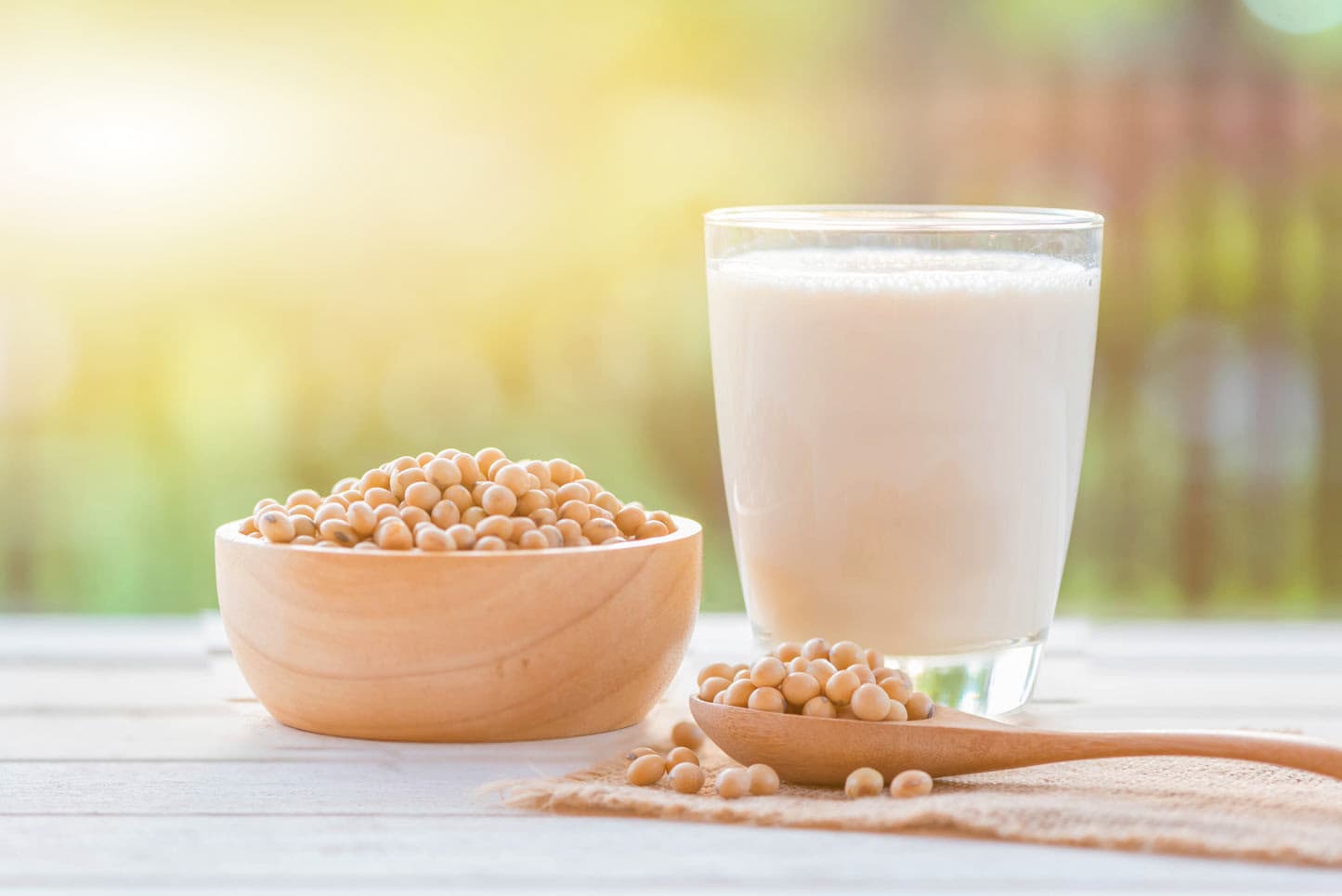
Soy and cholesterol
Pertaining to the health benefits of soy, nutritionist David Dahlman cites research showing that “soy consumption rather than animal protein significantly decreased serum concentrations of total cholesterol, LDL and triglycerides in hypercholesterolemic individuals [those with high bad cholesterol levels], but not in normolipidemic individuals [those with normal cholesterol levels].”23
How much soy is safe?
Is it dangerous to consume too much soy? Perhaps we can learn something about soy consumption from cultures where soy is a diet staple.
People in Asian cultures have been eating soy for centuries. Japanese adults, for example, consume an average of 1½ servings of soy foods daily. That’s about ¾ cup of tofu or 2¼ cups of soy milk. Traditional diets eaten by older Japanese people contain more soy.
However, soy consumption varies widely across Asia. In contrast to typical Japanese diets, the China Project found that the daily consumption of legumes, of which 80% were soy, amounted to an average of only 55-58 grams, equivalent to less than ¼ cup of tofu. T. Colin Campbell, a co-author of the study, explains that legumes in rural China “have often been considered more of a luxury food than a regular staple.”24 In comparison, in Shanghai, a city with a population of more than 26 million, studies have reported that most adults consume between 1 to 3 servings of soy daily.
The type of soy consumed also varies. In Japan, about half the soy eaten is in fermented forms such as natto and miso. The other half is consumed as tofu. In China, Singapore, and Hong Kong, most soy is eaten as tofu and soy milk. A typical breakfast in China often includes hot soy milk and bread, served as a soup, either sweet or savory. Tofu pudding is a popular snack, served as a savory dish with mushrooms and gravy or as a sweet treat with ginger and brown sugar.

For millions of people around the world, soy is a regular part of daily life and has been for thousands of years. But what about the reports that say soy is bad? Could all these cultures where soy foods are common be mistaken? Nutrition expert David Dahlman, responding to a media attack on soy, wrote, “Rarely will you find billions of people embracing a food for centuries only to find they have been wrong.”25 His journal article debunks many of the myths about soy. In addition, soy-loving cultures like the Okinawans witness to the health-giving benefits of soy.
The Okinawans: Long Life and Soy
Researchers have studied the diet and lifestyle of the Okinawans of Japan for lessons on how to live long and healthy. Known for their longevity and robust health into old age, Okinawans “have less cancer, heart disease and dementia than Americans, and women there live longer than any other women on the planet,” reports an article on the Blue Zones® website.26 In fact, Okinawa has triple the number of centenarians per 100 000 inhabitants compared to US populations.27 One of the healthy habits that contributes to their exceptional health and longevity is a diet “rich in foods made with soy.”28
It’s clear that simply prepared soy foods are safe and come with numerous health benefits. However, some cautions are worth considering. These include genetic modification, chemical use in conventionally-grown crops, hexane use in processing, and highly-processed soy products.
Soy Advice
When it comes to supporting optimal health, whole foods are best. Tofu and soy milk are minimally processed and, especially if you make your own, they contain few additives. But other soy products are highly processed and can contain a lot of stuff we shouldn’t put into our bodies. Read labels and avoid additives.
Hexane in soy products
Hexane is a neurotoxin used in the production of soy meal (flour), soy grits, soy oil, and soy protein (known as textured vegetable protein or TVP), soy protein isolate, or soy protein concentrate. Hexane can be found in soy bars, health bars, many vegetarian products, some soy milks, and even in baby formula. These products are made with soybean flour, which is chemically treated with hexane.
Organic classification prohibits the use of hexane in soy products, but be wary when you read ingredients lists. Unless each soy ingredient is marked as organic, don’t assume it is. Case in point: Clif Bar & Company® claims that Clif Bar is made with 70% organic ingredients29 but uses hexane-extracted isolated soy protein30 in the 30% non-organic ingredients.
Genetically modified and conventionally-grown soy vs. organic soy
According to the United States Department of Agriculture, more than 90% of soy produced in America is genetically modified.31 And unless they’re organically grown, soybeans are typically sprayed numerous times with a combination of chemicals, some for weed control, some for insect control. These chemicals are not only toxic, they contain xenoestrogens, or foreign estrogens, that are hazardous to your health. To avoid chemical residues and genetically engineered soy, buy organic soy products.
If you use a lot of soy milk, you might want to consider purchasing a soy milk maker and organic beans to make your own soy milk. People have been making soy milk and tofu for ages using simple methods. Look for online tutorials that show how to do it.
There are many good reasons for making soy a regular part of your diet. But what if you don’t like tofu or don’t know what to do with it? Plenty of straightforward, delicious recipes are available that can make getting more soy into your diet easy to do. Experiment until you strike on some favorites. Then start reaping the many health benefits of the humble soybean.
These statements have not been evaluated by the Food and Drug Administration or Health Canada. Our articles, videos and products are not intended to diagnose, treat, cure, or prevent any disease. If you are pregnant, nursing, taking medication, or have a medical condition, consult your physician before following any recommendations or using any product on our site. You assume sole responsibility for your personal health, and you must use your own discretion under doctor consultation to determine whether any product or recommendation on this site is suitable for your personal situation.

